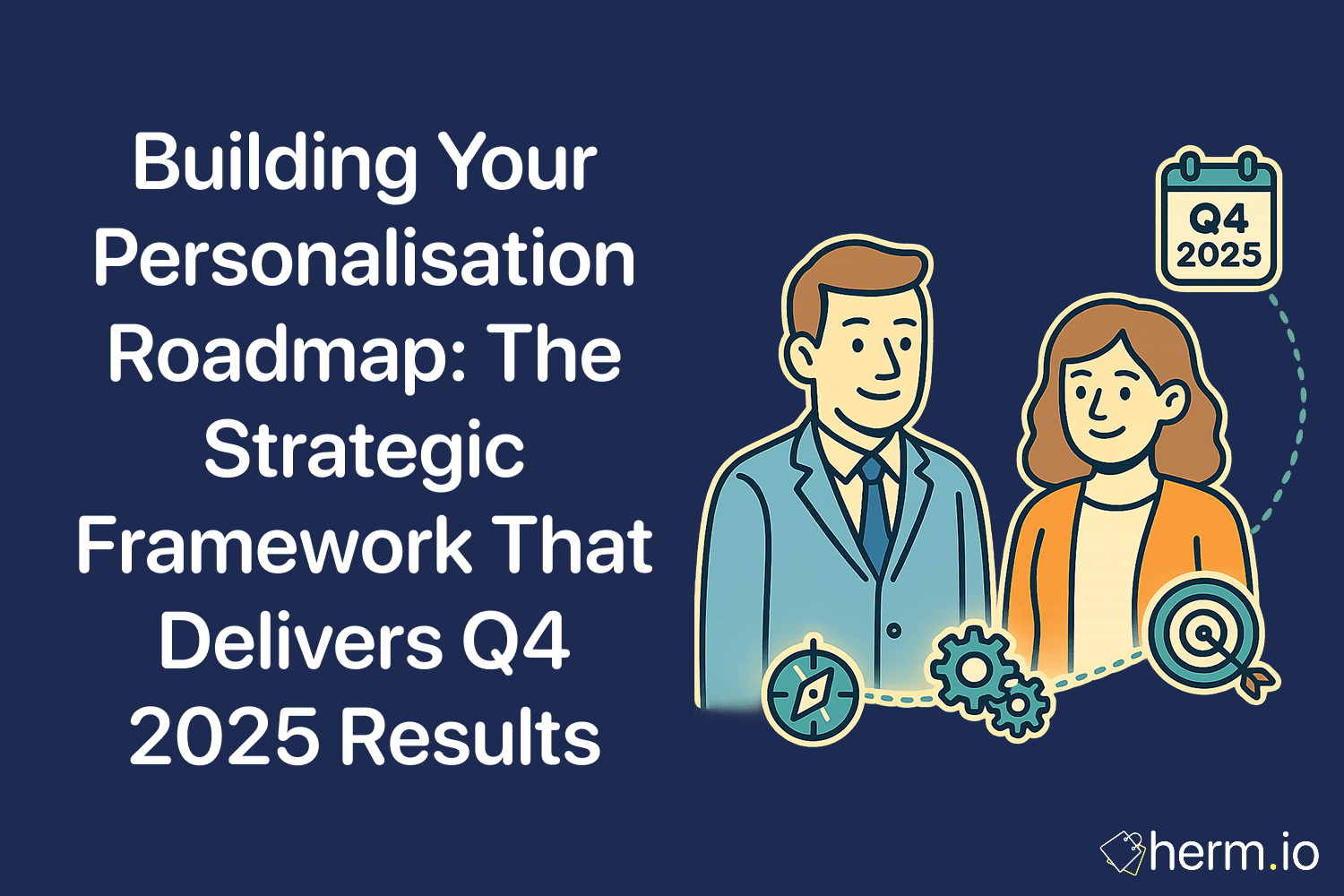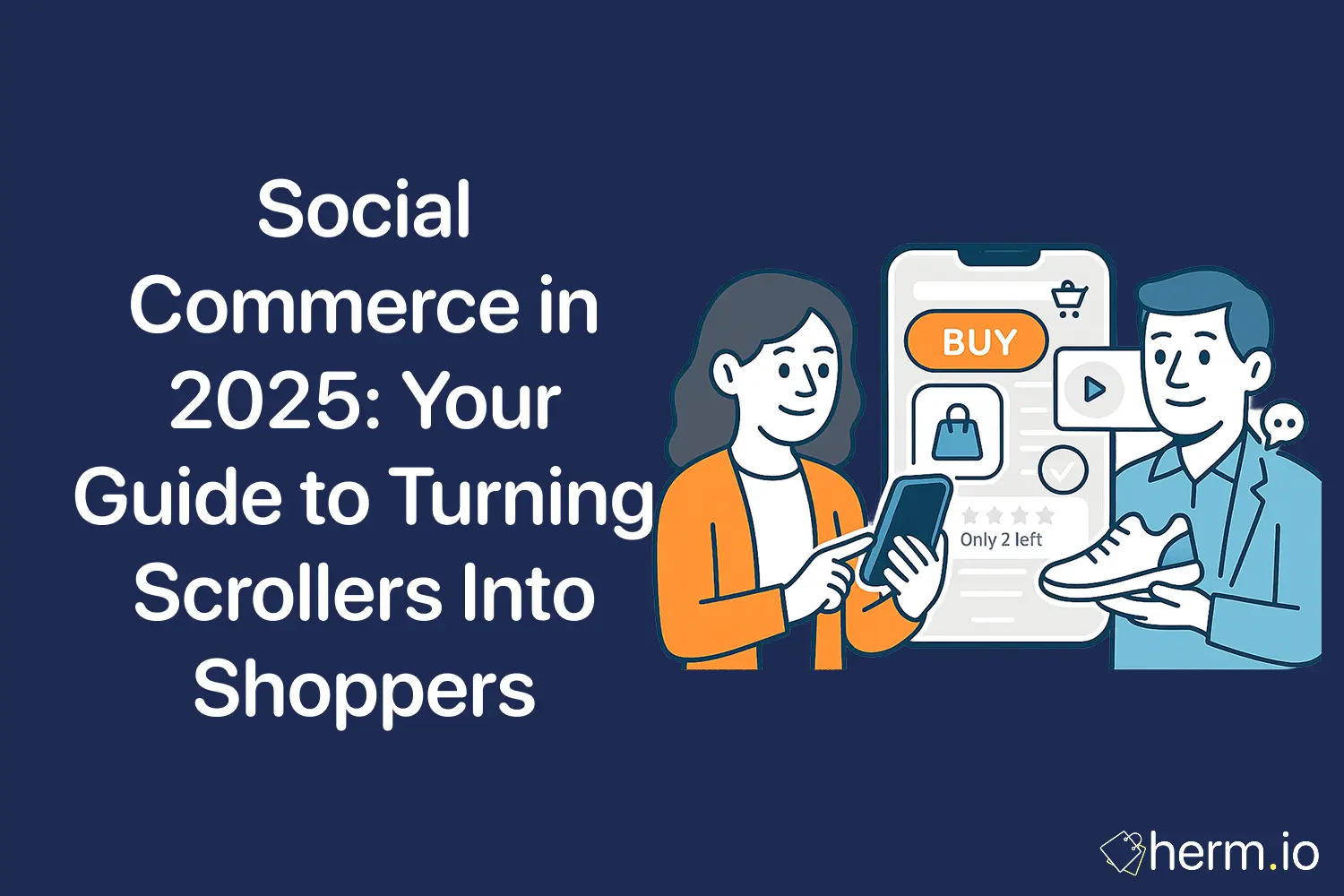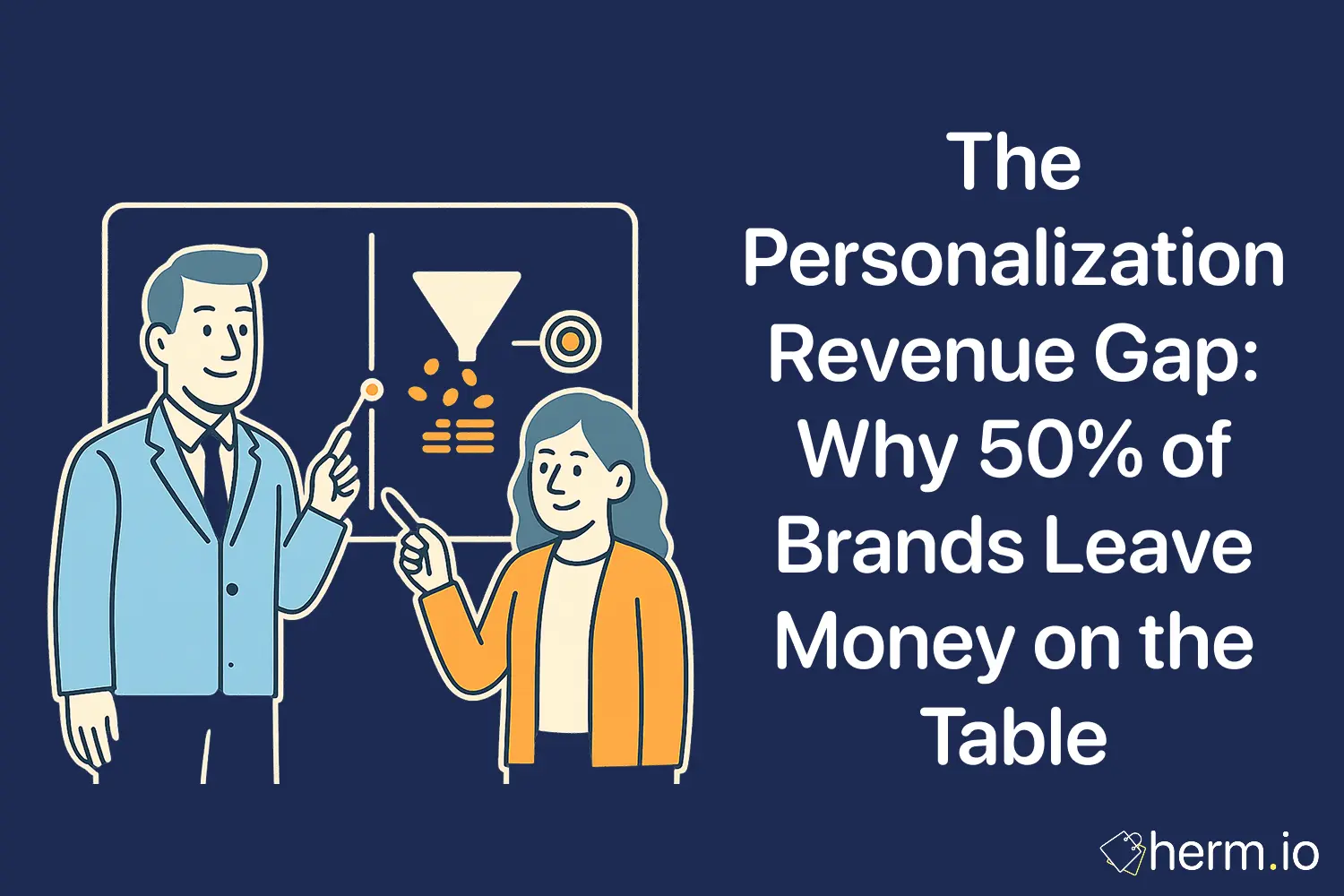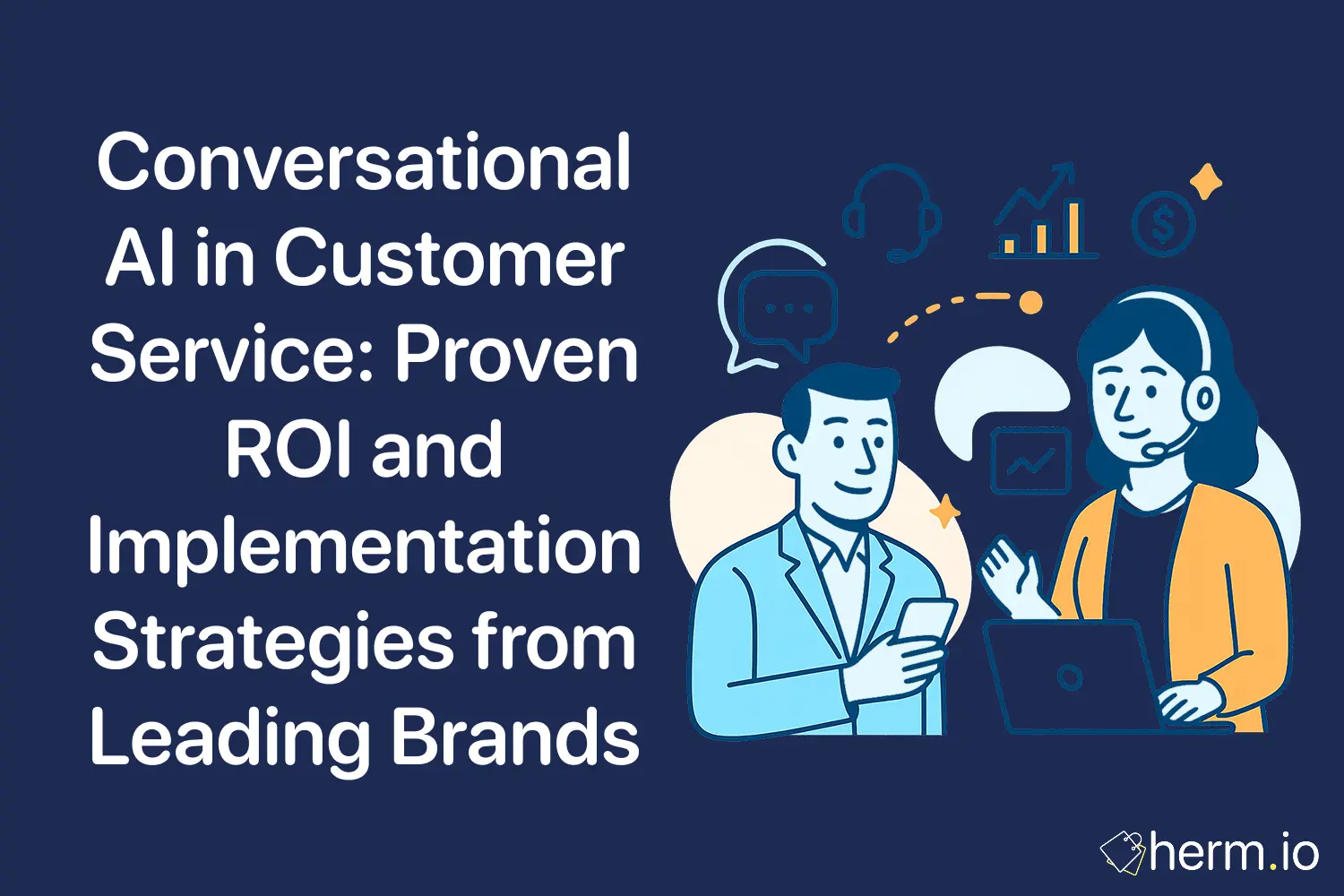
Here's what actually works when it comes to personalisation: treating it like the revenue-driving business strategy it is, not a collection of random experiments. After analysing hundreds of campaigns and speaking with marketing directors across industries, the pattern is clear. Teams that build systematic personalisation roadmaps see 40% higher revenue growth than those running ad-hoc tests.
The difference isn't in the technology they choose or the budget they allocate. It's in their approach. Instead of hoping personalisation will magically improve their numbers, they create detailed plans that connect every personalised touchpoint to measurable business outcomes. They know exactly which campaigns will launch when, which data sources will power them, and how success will be measured.
This strategic framework transforms personalisation from a nice-to-have marketing tactic into your most reliable path to Q4 2025 revenue growth. You'll discover how to audit your current capabilities with surgical precision, prioritise use cases that deliver immediate impact, and select technology that amplifies your team's efforts rather than complicating them.
Why Strategic Planning Delivers Results
Let's cut through the noise and focus on what separates successful personalisation programmes from expensive disappointments. The marketing teams achieving consistent results don't rely on intuition or industry best practices—they follow systematic roadmaps that align every personalised experience with specific business objectives.
The Cost of Fragmented Efforts
Picture your current personalisation efforts as a busy restaurant kitchen during the dinner rush. Without clear systems and coordination, even talented chefs produce inconsistent dishes, waste ingredients, and frustrate customers. Your marketing personalisation faces the same challenge when different team members create isolated campaigns without central coordination.
Consider how Spotify approached this challenge in 2023. Rather than allowing individual product teams to build separate recommendation engines, they created a unified personalisation platform that serves their Discover Weekly, Daily Mix, and advertising systems. This systematic approach increased user engagement by 25% while reducing development costs by 30%, according to their engineering blog published that year.
The restaurant analogy extends further when you examine resource allocation. A kitchen running multiple disconnected systems requires duplicate equipment, conflicting processes, and confused staff. Similarly, marketing teams without personalisation roadmaps often purchase overlapping tools, create competing customer segments, and struggle with data inconsistencies that undermine campaign performance.
Technology Alignment Through Strategic Planning
Here's what actually works: selecting technology after you've defined your use cases, not before. The most successful personalisation programmes start with business objectives, identify the customer experiences that drive those outcomes, then choose tools that enable those specific interactions.
Domino's Pizza exemplifies this approach in their 2024 digital transformation case study. Instead of implementing every available personalisation feature, they focused on three specific use cases: order prediction based on customer history, location-based promotions, and real-time inventory personalisation. This focused approach increased average order value by 18% and customer lifetime value by 22% within eight months.
The framework they followed mirrors what top-performing teams use consistently. First, they mapped customer touchpoints that influence purchase decisions. Second, they identified which personalisation tactics could improve conversion at each touchpoint. Third, they selected technology that could execute those tactics efficiently. Finally, they created measurement systems that tracked business impact, not just engagement metrics.
Your Systematic Capability Assessment
The results speak for themselves when teams conduct thorough capability assessments before launching new personalisation initiatives. Instead of discovering limitations mid-campaign, systematic audits reveal exactly where your programme stands and what improvements will generate the highest returns.
Mapping Your Current Personalisation Landscape
Begin by documenting every customer touchpoint where personalisation currently exists or could be implemented. This includes obvious channels like email and website experiences, but also extends to customer service interactions, mobile app experiences, and paid media campaigns. For each touchpoint, record the personalisation logic currently in use, the data sources powering those decisions, and the metrics tracked.
Sephora's 2023 personalisation audit, documented in their Sailthru case study, revealed surprising gaps between their ambitious personalisation goals and actual implementation. While their Beauty Insider programme collected extensive customer preference data, less than 30% of that information was being used across their email, mobile app, and in-store experiences. This audit led to a coordinated integration project that increased personalised conversion rates by 35%.
Your audit should examine three critical dimensions: data availability, technology capabilities, and team expertise. Data availability means cataloguing every customer data source you currently collect, how frequently it's updated, and which systems can access it in real-time. Technology capabilities require honest assessment of your current platforms' personalisation features, integration possibilities, and performance limitations. Team expertise involves identifying who can create personalised content, analyse campaign performance, and troubleshoot technical issues when they arise.
Capability Scoring for Strategic Decisions
Transform your audit findings into actionable insights by scoring each capability on a five-point scale. This scoring system creates visual clarity around where your programme excels and where immediate improvements would generate the highest impact on campaign performance.
Score data sources based on completeness, accuracy, and accessibility. A customer database with 95% complete purchase history that updates in real-time scores higher than survey data collected sporadically with low response rates. Score technology platforms based on their personalisation sophistication, ease of use, and integration capabilities. Score team expertise based on current skill levels, availability for personalisation projects, and learning capacity for new techniques.
ASOS used this scoring methodology during their 2023 personalisation overhaul, as detailed in Monetate's e-commerce case study. Their audit revealed strong scores in customer behavioural data and weak scores in real-time personalisation technology. This clarity guided their technology selection process and training investments, ultimately contributing to a 28% increase in personalised product recommendation clicks and a 15% improvement in average order value.
Strategic Use Case Prioritisation
Here's what separates effective personalisation roadmaps from wishful thinking: ruthless prioritisation based on business impact rather than technical complexity or industry trends. The most successful programmes identify use cases that align directly with revenue goals, then sequence them based on implementation effort and expected returns.
Revenue-Focused Use Case Development
Transform your personalisation ambitions into specific, measurable use cases by connecting each potential campaign to quantifiable business outcomes. Instead of vague goals like "improve customer experience," define precise objectives such as "increase repeat purchase rate by 12% among customers who haven't bought in 60 days" or "reduce cart abandonment by 20% for visitors viewing premium products."
Booking.com's approach to use case development, presented at the 2023 MarTech Conference, demonstrates this principle in action. Rather than implementing broad personalisation across their platform, they focused on three specific scenarios: reducing booking abandonment for price-sensitive travelers, increasing ancillary bookings for business travelers, and improving customer service efficiency through predictive support needs. Each use case included specific success metrics, target audience definitions, and measurement timelines.
Consider how your use cases address different stages of the customer lifecycle. Acquisition-focused personalisation might include dynamic ad creative based on browsing behaviour or personalised landing pages for different traffic sources. Retention-focused use cases could involve win-back campaigns triggered by engagement patterns or loyalty programme personalisation based on purchase history. Growth-focused personalisation might target cross-selling opportunities or premium service upgrades based on customer value indicators.
Impact Versus Effort Analysis
The most effective prioritisation method evaluates each use case across two dimensions: expected business impact and implementation complexity. This analysis prevents teams from pursuing impressive-sounding projects that require months of development for minimal revenue improvement, while highlighting quick wins that can demonstrate value while larger initiatives are being developed.
Impact assessment considers multiple factors beyond immediate revenue increases. Some personalisation use cases improve customer satisfaction scores, which correlate with long-term value but may not show immediate financial returns. Others reduce operational costs by automating manual processes or decreasing customer service contacts. Still others provide strategic advantages by improving data collection or customer insights that enable future campaigns.
Effort assessment examines technical requirements, content creation needs, and ongoing maintenance demands. A use case requiring new data integrations, custom development, and specialised content creation scores higher on implementation complexity than one using existing data sources and platform features. Netflix's personalisation team, according to their 2024 engineering blog, uses a weighted scoring system that accounts for development time, content requirements, quality assurance needs, and performance monitoring demands.
Technology Selection and Implementation Strategy
Let's cut through the vendor marketing and focus on what actually drives personalisation success: choosing technology that amplifies your team's capabilities rather than replacing them. The most effective platforms integrate seamlessly with your existing systems, provide marketer-friendly interfaces, and scale with your programme's sophistication over time.
Platform Evaluation Framework
Evaluate personalisation technology using criteria that reflect your actual implementation requirements rather than impressive feature lists. The three most critical capabilities are data unification, real-time personalisation, and marketer autonomy. Data unification determines how effectively the platform connects customer information across touchpoints. Real-time personalisation affects your ability to respond to customer behaviour as it happens. Marketer autonomy influences how quickly your team can create and modify campaigns without technical assistance.
Marriott's technology selection process, documented in their 2023 Bonvoy personalisation case study, illustrates this framework's practical application. They prioritised platforms that could unify guest data across their hotel brands, loyalty programme, and booking channels while allowing marketing teams to create personalised campaigns without IT involvement. This approach enabled them to launch cross-brand personalisation that increased direct booking rates by 22% and loyalty programme engagement by 31%.
Consider integration capabilities carefully, as personalisation platforms must connect with your existing email systems, content management platforms, analytics tools, and customer databases. Seamless integration prevents data silos that undermine personalisation effectiveness and reduces the technical complexity that often derails implementation projects. Look for platforms with pre-built connectors to your current technology stack rather than those requiring custom development.
Implementation Timeline Planning
Structure your implementation timeline around campaign launches rather than technology deployment, ensuring that each milestone delivers measurable value to your business. This approach maintains momentum and demonstrates return on investment throughout the implementation process, rather than requiring long development periods before any results become visible.
Phase your implementation to begin with use cases that leverage existing data sources and platform capabilities, then gradually introduce more sophisticated campaigns as your team's expertise develops and additional integrations are completed. This progression allows your organisation to learn from early campaigns and refine approaches before tackling complex personalisation scenarios.
Airbnb's phased implementation strategy, presented at the 2024 Growth Marketing Conference, started with email personalisation using existing guest data, expanded to website personalisation based on search behaviour, then introduced predictive pricing recommendations. Each phase built upon previous learnings and capabilities, ultimately creating a comprehensive personalisation ecosystem that increased booking conversion rates by 27% and customer lifetime value by 19%.
Q4 2025 Campaign Strategy
The final quarter presents unique opportunities for personalisation programmes, combining peak consumer attention with concentrated shopping periods that amplify the impact of targeted campaigns. Your roadmap should account for both the extended holiday shopping season and the post-purchase engagement opportunities that set the foundation for the following year.
Holiday Shopping Personalisation
Transform the traditional holiday marketing approach by creating personalised experiences that acknowledge where each customer stands in their shopping journey rather than assuming universal deal-seeking behaviour. Some customers begin holiday shopping in early October, others wait until December, and many fall somewhere between. Your personalisation strategy should recognise these patterns and deliver relevant experiences accordingly.
Target's 2023 holiday personalisation campaign, analysed in their annual retail report, segmented customers based on shopping timing patterns from previous years. Early shoppers received personalised gift guides and exclusive early access offers. Last-minute shoppers saw expedited shipping options and locally available inventory. Planned shoppers received personalised reminders and list-building tools. This approach increased holiday season revenue by 16% compared to their previous one-size-fits-all strategy.
Consider how inventory awareness enhances holiday personalisation effectiveness. Real-time stock levels integrated into personalised recommendations prevent customer frustration while optimising sales of available products. Dynamic pricing based on demand patterns and customer price sensitivity can maximise revenue during peak shopping periods. Geographic personalisation ensures shipping deadlines and local availability information align with each customer's location and shopping timeline.
End-of-Year Engagement Strategies
December's final weeks and January's beginning offer distinct personalisation opportunities as purchase intent decreases but engagement possibilities increase. This period allows you to strengthen customer relationships, collect preference data, and establish foundations for the following year's campaigns without the pressure of immediate conversion goals.
Spotify's year-end "Wrapped" campaign exemplifies how personalised content can drive engagement during low-commercial periods. Their 2023 campaign generated over 120 million social media shares by creating personalised music summaries that felt valuable rather than promotional. This approach strengthened customer loyalty and provided rich data for future personalisation efforts.
Consider implementing personalised year-in-review content that highlights each customer's relationship with your brand. Purchase summaries, milestone celebrations, and personalised recommendations for the coming year create positive associations while collecting valuable preference information. Interactive content like preference quizzes or goal-setting tools can gather zero-party data that enhances future personalisation while providing immediate value to customers.
Measuring Personalisation Performance
Here's what actually matters when measuring personalisation success: connecting campaign performance to business outcomes rather than engagement metrics alone. The most successful programmes track multiple measurement layers that provide both immediate tactical feedback and long-term strategic insights about customer behaviour and programme effectiveness.
Key Performance Indicators
Establish measurement frameworks that capture both immediate campaign performance and customer lifetime impact. Revenue per visitor, conversion rate improvements, and average order value increases provide immediate feedback about campaign effectiveness. Customer lifetime value, retention rates, and engagement quality offer insights into long-term programme success.
Starbucks' personalisation measurement approach, documented in their 2024 loyalty programme analysis, tracks immediate metrics like offer redemption rates and purchase frequency alongside long-term indicators such as customer lifetime value and brand engagement scores. This comprehensive measurement revealed that personalised offers increased immediate redemption by 23% while also improving six-month retention rates by 18%.
Consider cohort analysis to understand how personalisation affects customer behaviour over time. Compare personalised campaign recipients with control groups across multiple timeframes to identify both immediate conversion improvements and lasting behavioural changes. This analysis reveals whether personalisation creates sustainable value or merely shifts purchase timing without increasing overall customer value.
Attribution and Incrementality
Develop attribution models that account for personalisation's role in multi-touchpoint customer journeys rather than giving full credit to last-click interactions. Personalisation often influences purchase decisions across multiple touchpoints, and accurate measurement requires understanding these cumulative effects.
Amazon's attribution methodology, discussed in their 2023 advertising effectiveness study, uses incremental testing to measure personalisation's true impact on customer behaviour. They compare personalised experiences with carefully designed control groups to isolate the specific contribution of personalisation to conversion improvements, customer retention, and lifetime value increases.
Implementation Roadmap Template
Transform your personalisation planning into actionable timelines using this systematic framework that connects strategic objectives with tactical execution across quarterly milestones. This template ensures every personalisation initiative contributes to measurable business outcomes while building capabilities for future campaign sophistication.
Quarterly Milestone Framework
Structure your roadmap around quarterly objectives that build upon each other while delivering standalone value. Q2 2025 should focus on foundation building: completing capability audits, selecting technology platforms, and implementing basic personalisation campaigns that demonstrate immediate value. Q3 2025 emphasises expansion: launching advanced use cases, integrating additional data sources, and refining measurement systems based on early campaign learnings.
Q4 2025 represents the culmination of your roadmap, implementing sophisticated holiday personalisation campaigns while collecting data and insights that inform the following year's strategy. Each quarter should include specific technology milestones, campaign launches, performance targets, and team development objectives that contribute to overall programme success.
Adobe's quarterly roadmap approach, presented at their 2024 customer experience summit, allocates 40% of each quarter to foundational improvements, 40% to campaign execution, and 20% to experimental initiatives that explore future possibilities. This balance ensures consistent progress while maintaining flexibility for emerging opportunities and market changes.
Resource Allocation Planning
Align your budget allocation with roadmap priorities, ensuring adequate resources for both technology investments and ongoing campaign execution. Most successful personalisation programmes allocate approximately 30% of their budget to technology and data infrastructure, 50% to campaign creation and management, and 20% to measurement and optimisation activities.
Consider both one-time implementation costs and ongoing operational expenses when planning resource allocation. Technology platforms typically require initial setup investments followed by monthly subscription fees. Campaign creation demands ongoing content development, creative production, and performance monitoring. Measurement and optimisation require analytics tools, testing platforms, and potentially external consulting expertise.
Frequently Asked Questions
How far in advance should personalisation campaigns be planned?
Strategic personalisation requires planning three to six months ahead for major initiatives, though tactical campaigns can be implemented within weeks. Complex use cases involving new data integrations, custom development, or significant content creation need longer lead times. Your Q4 2025 campaigns should be planned by June 2025, with technology selections finalised and content creation beginning by August. This timeline allows adequate testing, refinement, and optimisation before peak performance periods.
Which metrics best indicate personalisation programme success?
Focus on business impact metrics rather than engagement indicators alone. Revenue per visitor, customer lifetime value, and conversion rate improvements provide the clearest picture of personalisation effectiveness. Supplement these with engagement metrics like click-through rates and time on site to understand how personalisation influences customer behaviour. The most successful programmes track both immediate campaign performance and long-term customer relationship improvements.
How can small marketing teams implement sophisticated personalisation?
Start with platform features and existing data rather than building custom solutions. Most modern marketing platforms include personalisation capabilities that can be implemented without technical expertise. Focus on high-impact, low-complexity use cases first, such as personalised email content based on purchase history or website recommendations based on browsing behaviour. Gradually expand sophistication as your team's expertise and available resources grow.
What are the most common personalisation implementation challenges?
Data quality and integration issues represent the primary obstacles for most personalisation programmes. Inconsistent customer identifiers across systems prevent effective personalisation, while outdated or incomplete data undermines campaign relevance. Address these challenges during your capability audit phase rather than discovering them during campaign launches. Additionally, many teams underestimate the content creation demands of personalised campaigns, particularly for dynamic creative and multi-variant messaging.
How does personalisation performance change over time?
Expect immediate improvements in engagement metrics followed by gradual increases in conversion and revenue indicators. Most programmes see 10-20% engagement improvements within the first month, with conversion rate improvements appearing within two to three months. Long-term benefits like customer lifetime value increases and retention improvements typically become measurable after six months of consistent personalisation. Performance continues improving as programmes become more sophisticated and customer data becomes richer over time.
References and Further Reading
To learn more about the case studies mentioned in this article, consider researching:
- "Spotify Discover Weekly personalisation algorithm case study" - Spotify's engineering blog contains detailed analysis of their recommendation system architecture and the impact on user engagement metrics.
- "Domino's Pizza digital transformation personalisation MarTech Conference 2024" - MarTech Conference proceedings include Domino's presentation on order prediction algorithms and their impact on customer lifetime value.
- "Sephora Beauty Insider personalisation Sailthru retail index" - Sailthru's retail personalisation index provides detailed analysis of Sephora's loyalty programme personalisation strategies and their impact on customer retention.
- "ASOS Monetate dynamic product recommendations case study" - Monetate's e-commerce personalisation case study details ASOS's implementation approach and specific metrics on order value increases.
- "Booking.com personalisation MarTech Conference 2023" - Conference presentation materials outline Booking.com's systematic approach to reducing booking abandonment through personalised experiences.
- "Marriott Bonvoy personalisation technology selection 2023" - Marriott's case study documentation shows their platform evaluation criteria and implementation results across hotel brands.
- "Target holiday personalisation retail report 2023" - Target's annual retail analysis includes detailed breakdown of their customer segmentation approach and holiday season performance improvements.

Élodie Claire Moreau
I'm an account management professional with 12+ years of experience in campaign strategy, creative direction, and marketing personalization. I partner with marketing teams across industries to deliver results-driven campaigns that connect brands with real people through clear, empathetic communication.

.png)








.png)

.png)
.png)
.png)